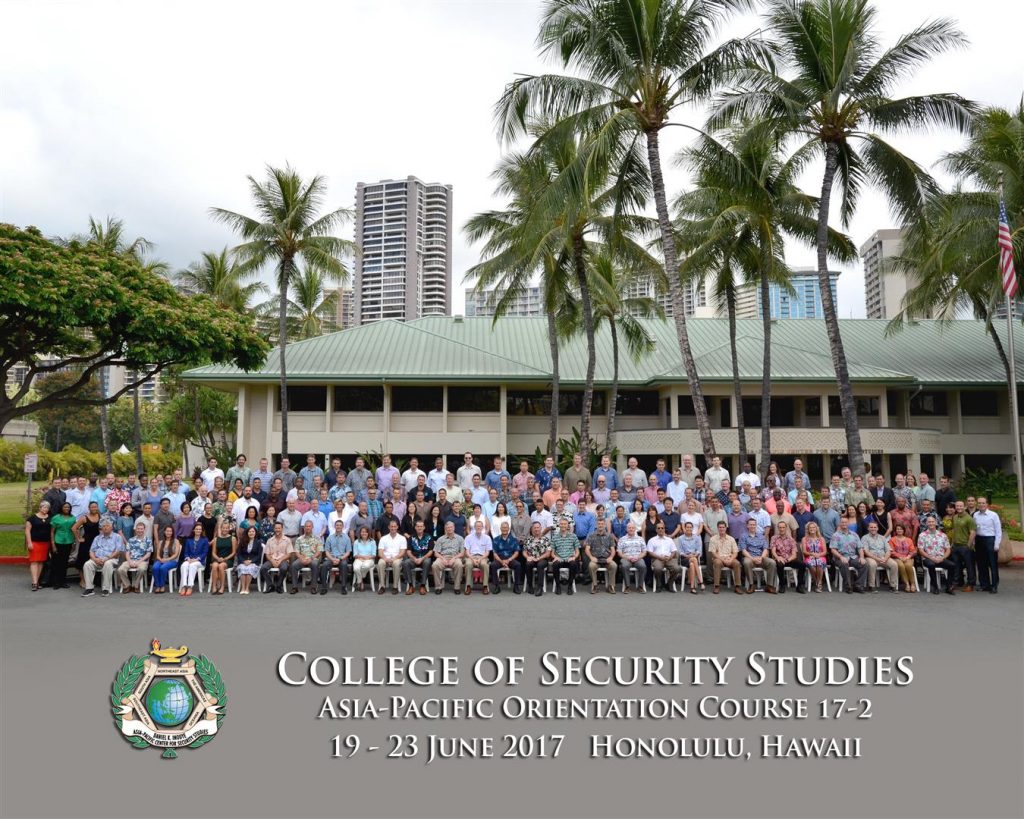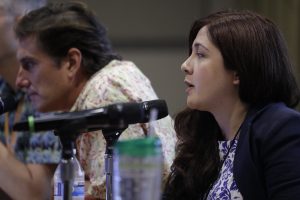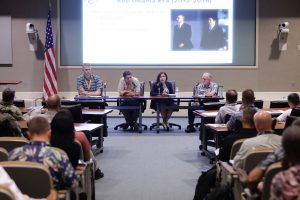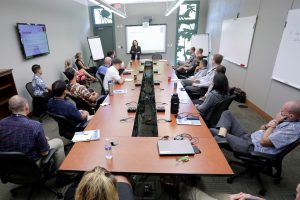
On June 23, we finished up another successful Asia-Pacific Orientation Course (APOC 17-2) at the Daniel K. Inouye Asia-Pacific Center for Security Studies. We had 148 students from the United States, Australia, Canada, Hong Kong, Japan, Malaysia, New Zealand, the Republic of Korea, Singapore, and Taiwan. It was really a pleasure to work with everyone and to talk to such a diverse group of mid-career security practitioners about trends in the security, economics, and in the Asia-Pacific region. I gave the plenary lecture on Economics & Security in the Asia-Pacific and enjoyed hearing the varied questions from the audience about trade, investment, development assistance, and socioeconomic trends.
A new innovation in this course was a set of sub-regional elective panels covering perceptions of US foreign policy in Northeast Asia, Southeast Asia, South Asia, and Oceania. These were intended to provide short overviews of country-specific views, particularly for those with relatively little experience in a sub-region. I participated in the panel on Northeast Asia, where I had a chance to speak specifically about Japanese perspectives on US foreign policy during the Obama and Trump administrations. My colleagues from DKI APCSS focused on China, Russia, and the two Koreas respectively.
I also gave an updated version of my elective on Contemporary Japanese Security Policy, which situates recent developments under the Abe administration in political, social, and historical context. The lecture begins with a systematic discussion of the security reforms undertaken by Japan since the election of Prime Minister Shinzo Abe in December 2012, starting with the creation of the National Security Council and Japan’s first-ever National Security Strategy and ending with the recent passage of anti-conspiracy legislation. It then provides an analysis of the key domestic and international factors shaping Japan’s security policy and suggests some challenges and opportunities that these changes in security policy may present for the US and for Japan’s neighbors in Asia.
This was the third Asia-Pacific Orientation Course that I’ve taught since joining the Daniel K. Inouye Asia-Pacific Center for Security Studies last year. Each one is a little different, and it’s always very informative to see the shifting mood of the US and of the region reflected in the perspectives of our students. Thanks for the good discussions!




